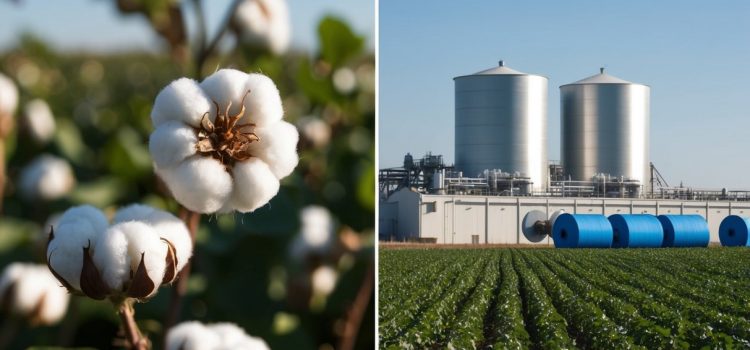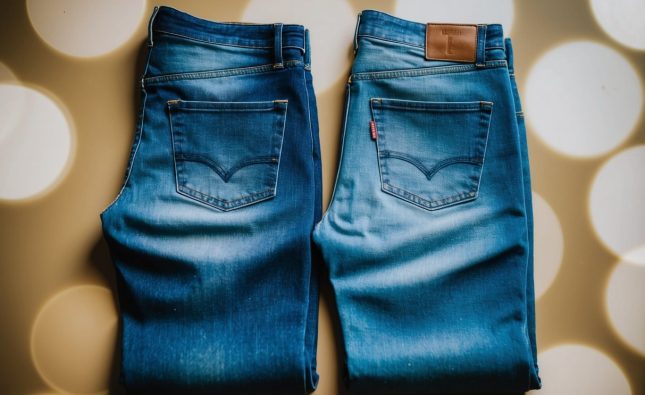
When choosing between cotton and polyester T-shirts, people often wonder which material offers the best value in terms of comfort, durability, and cost. Cotton provides breathability and softness, making it an excellent choice for casual wear, while polyester boasts moisture-wicking properties and enhanced durability, ideal for active use. Understanding the differences between these fabrics can help consumers make informed decisions based on their specific needs.

Cotton T-shirts are favored for their natural feel and comfort against the skin. They are versatile and suitable for various occasions, but they may shrink or fade over time. In contrast, polyester T-shirts are known for their longevity and performance, especially in athletic environments, where sweat management is essential.
Before settling on a fabric, readers should consider their lifestyle and preferences. This article will explore the unique characteristics of cotton and polyester, providing insights to help individuals choose the right T-shirt material for their wardrobe.
Materials Overview
T-shirts are commonly made from cotton or polyester, each material offering distinct features. Understanding the properties of these fabrics helps consumers make informed choices based on their preferences for comfort, durability, and care.
Properties of Cotton
Cotton is a natural fiber known for its breathability and softness. It is highly absorbent, which makes it comfortable in warm conditions, allowing moisture to escape from the skin. The fibers are soft, leading to a comfortable feel against the skin.
Cotton is also hypoallergenic, which means it is less likely to irritate sensitive skin. It is more prone to shrinkage and wrinkling compared to synthetic fibers.
When it comes to care, cotton can be machine washed and dried, though high heat may cause shrinkage. The environmental impact of cotton cultivation can vary depending on agricultural practices, making organic cotton a sustainable option worth considering.
Properties of Polyester
Polyester is a synthetic fiber known for its durability and resistance to wrinkles. It retains its shape well and does not absorb moisture as effectively as cotton, making it quicker to dry. This fabric is often used for athletic wear due to its lightweight nature and ability to wick moisture away from the body.
Polyester is resistant to shrinking and stretching, which enhances its longevity. It is also less likely to fade over time, maintaining vibrant colors.
Care is straightforward, as polyester can be machine washed and dried without special treatment. However, it is less breathable than cotton and may feel warmer against the skin, especially in hot weather.
Production and Environmental Impact
The production of T-shirts from cotton and polyester involves different processes and impacts the environment in various ways. Understanding these aspects helps consumers make informed choices about their apparel.
Cotton Production
Cotton is primarily grown in warmer climates, necessitating significant water resources. The growth process often involves the use of pesticides and fertilizers, which can lead to soil degradation and water contamination.
In addition, cotton plants require about 7,000 liters of water to produce just 1 kilogram of cotton. This high water usage raises concerns, especially in arid regions where cotton farming may strain local water supplies.
Despite its natural origins, the environmental cost of conventional cotton production is considerable. Organic cotton farming offers a more sustainable alternative, reducing chemical use and promoting better soil health.
Polyester Production
Polyester is a synthetic fabric derived from petroleum products. The production process includes the polymerization of ethylene glycol and terephthalic acid, which can produce harmful greenhouse gases.
The manufacturing of polyester is energy-intensive and often associated with fossil fuel extraction. The process also generates wastewater, which can contaminate local ecosystems if not properly managed.
Recycling polyester, commonly found in plastic bottles, can lessen its environmental impact. However, the reliance on virgin materials remains prevalent, raising sustainability concerns.
Comparative Sustainability
When comparing cotton and polyester, both materials have distinct environmental impacts. Cotton’s heavy water usage and pesticide reliance pose significant challenges, while polyester’s dependence on fossil fuels contributes to greenhouse gas emissions.
A key factor in sustainability is the potential for recycling. Polyester can be more easily recycled compared to cotton, which often degrades in quality after multiple washes.
Environmental Factors Comparison:
| Factor | Cotton | Polyester |
|---|---|---|
| Water Usage | High (7,000 liters/kg) | Moderate (dependent on recycling) |
| Chemical Use | Pesticides and fertilizers | Minimal during use |
| Resource Origin | Natural | Synthetic |
| Recyclability | Limited | High |
Both fabrics present environmental challenges and benefits. Choosing responsibly sourced materials can influence positive change in the fashion industry.
Performance and Comfort

Comfort and performance are crucial when choosing between cotton and polyester T-shirts. Each fabric offers distinct advantages that can influence a wearer’s experience based on intended use, weather conditions, and personal preference.
Comfort Factors
Cotton is known for its softness and breathability. It allows air circulation, which helps keep the body cool in warm weather. This natural fiber absorbs moisture well, thus providing comfort by drawing sweat away from the skin.
In contrast, polyester is often regarded for its lightweight and moisture-wicking properties. It dries quickly, which can be beneficial during physical activities. Some wearers may find polyester less breathable than cotton, depending on the style and fit of the garment.
Many brands combine both materials to enhance comfort by harnessing the strengths of each fabric. This blend can result in T-shirts that feel soft while also providing performance benefits.
Durability and Care
Cotton T-shirts generally require more care to maintain their appearance and longevity. They can shrink and fade over time, especially with frequent washing. Proper washing techniques and gentle drying methods are essential to preserve quality.
Polyester, on the other hand, is highly resistant to shrinking, fading, and wrinkles. It tends to maintain its shape and color after multiple washes. Polyester also dries quickly, reducing laundry time.
Both fabrics can benefit from regular washing, but polyester is often more forgiving. For active wearers or those looking for low-maintenance options, polyester T-shirts may provide a more practical choice.
Consumer Considerations
When choosing between cotton and polyester T-shirts, consumers should assess the cost implications and the specific scenarios in which they will wear the shirts. These factors can significantly impact satisfaction and value for money.
Cost Implications
Cotton T-shirts generally have a higher price point compared to polyester options. This is due to cotton’s natural origin and the costs associated with its cultivation and processing.
On average, a basic cotton T-shirt may range from $15 to $30, while polyester alternatives typically cost between $10 and $25.
Consumers should consider the long-term value. While cotton offers comfort and breathability, polyester provides durability and resistance to wrinkles and shrinking. Therefore, initial cost savings with polyester may lead to advantages over time, as they often endure more washes.
Usage Scenarios
The choice between cotton and polyester also depends on the intended use. Cotton is often preferred for casual wear due to its softness and breathability, making it suitable for everyday activities and warmer climates.
On the other hand, polyester is ideal for athletic wear and outdoor activities. It wicks moisture away, dries quickly, and retains its shape well, making it a desirable option for those engaging in sports or outdoor events.
For consumers involved in varied settings, having a mix of both materials may be beneficial to meet different needs and preferences.












